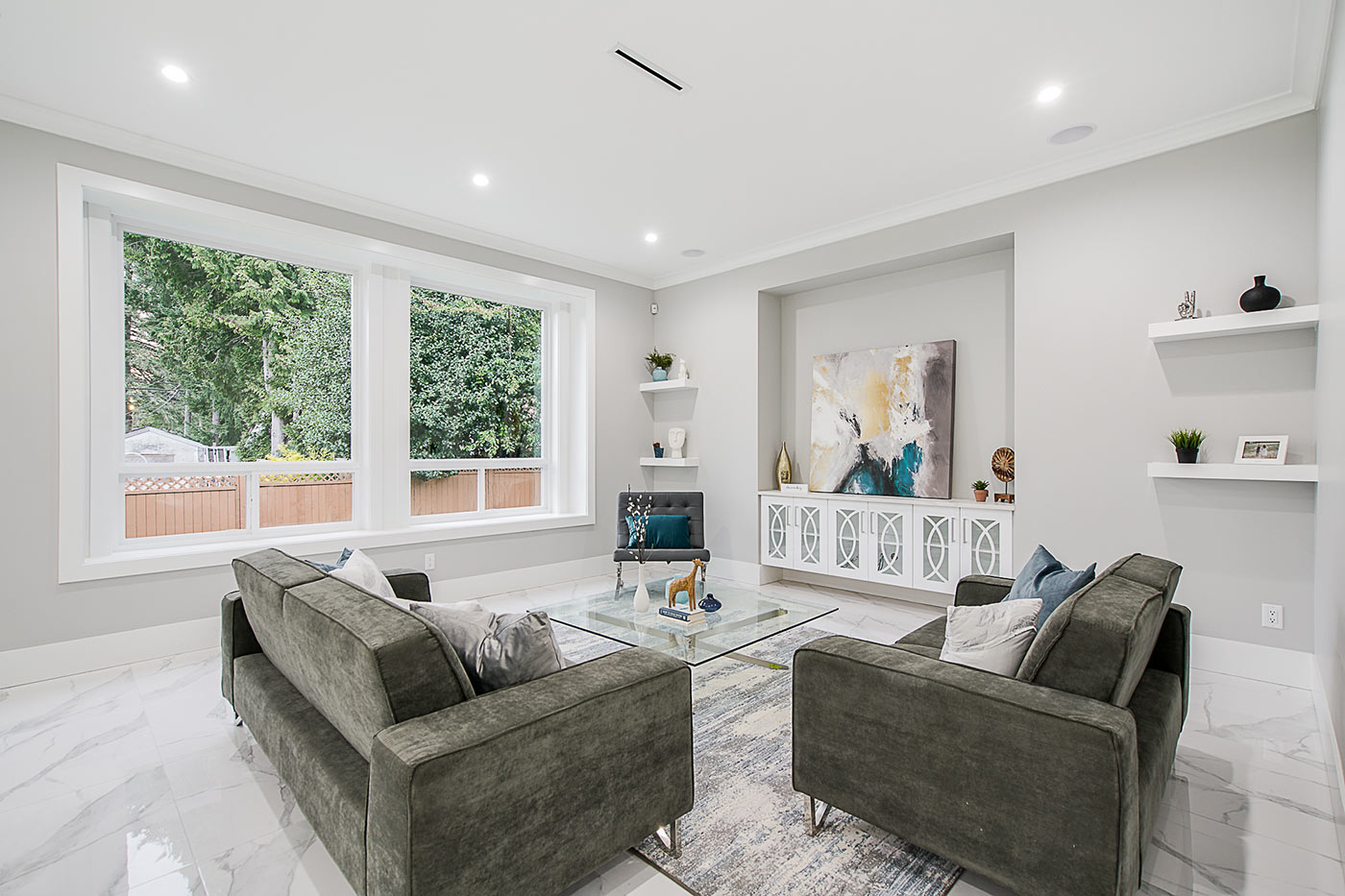1. Avoid the cookie-cutter approach
Forget about any one-size-fits-all approach. It is more than likely that buyers will have seen a dozen or more homes before they reach yours. So, it’s possible for them to see the same look (grey sofa’s, grey and black wall-art, white dining tables) over and over again. By this point, the staging loses its effectiveness.
How do you avoid this generic look? Be distinctive (while following the basic rules of staging, of course) by using eye-catching artwork, unique textures and textiles, and one or two pops of colour, which allows the eye to circulate around a room. For wall-art, combine different mediums, such as photographs and metalwork, or even a chalkboard panel.
2. Leaving personal effects
Lesson #1: A home purchase always begins with an emotional connection. How to guarantee that connection doesn’t happen? Leave too much evidence of the homeowners personal tastes, photographs, and religious views, because it makes it really difficult for a homebuyer to envision themselves living in the home.
3. Not enough lighting
Unfortunately, lighting is often forgotten in the home staging process, but it has the most impact than any other element. Walk into a room bathed in cozy, warm lighting and you’ll feel a sense of calm. Walk into the same room glowing with harsh fluorescents, and you will be overcome with anxiety.
So, it is important to assess the lighting situation and change it accordingly. To brighten up a dark room, remove window coverings, and incorporate mirrors, reflective surfaces, and light coloured furnishings. To make a room feel warmer, use incandescent bulbs instead of LED. To make a room feel larger or more interesting, add layer different types of lighting such as ambient (brightens the entire room), accent (to accent a special feature or space), and task (for functionality).
4. Forgetting about objects of desire and comfort
These extra touches can elicit a powerful visceral response, from luxurious fur throws and decor pillows scattered on a living room sofa to an ultra-soft, white bath robe hanging in the bathroom.
Hotel-style bedding, fresh-looking faux flowers (or real ones) and spa products in the bathroom can also have the same effect. Just don’t go overboard, which can make the space feel contrived.
5. Passing up staging entirely
Many people understand the value in staging, but don’t want to pay for it. Quotes from staging companies that are in the range of $3000-5000 upfront, can sound daunting. Many buyers just don’t have that type of cash laying around. There are affordable ways, however, to work with a staging expert.
A professional stager is trained to help buyers identify their priorities, wether that is having someone come in for a consultation and offer advice or just redo one or two rooms. And for a vacant home, simply staging the main entryway and living area can be very effective. It doesn’t have to be all-or-nothing.
And in the end, staging will save you money, with staged homes selling for 6-25% more than the non-staged home.

